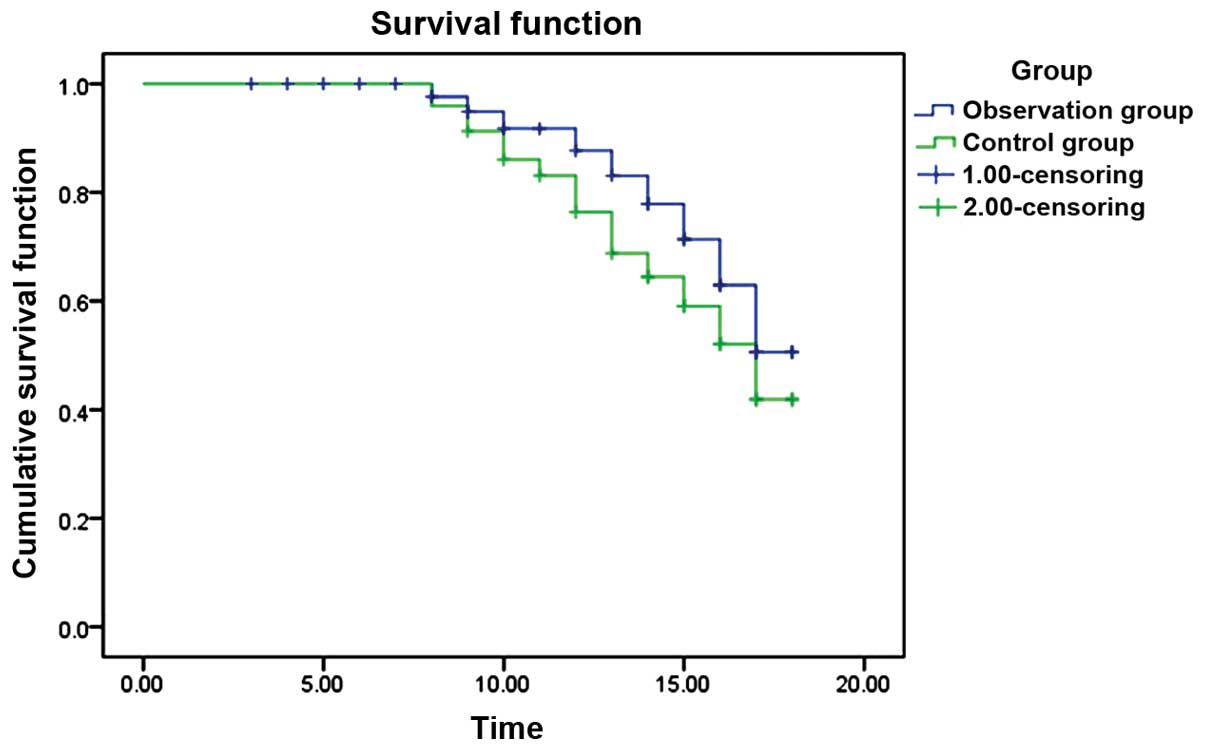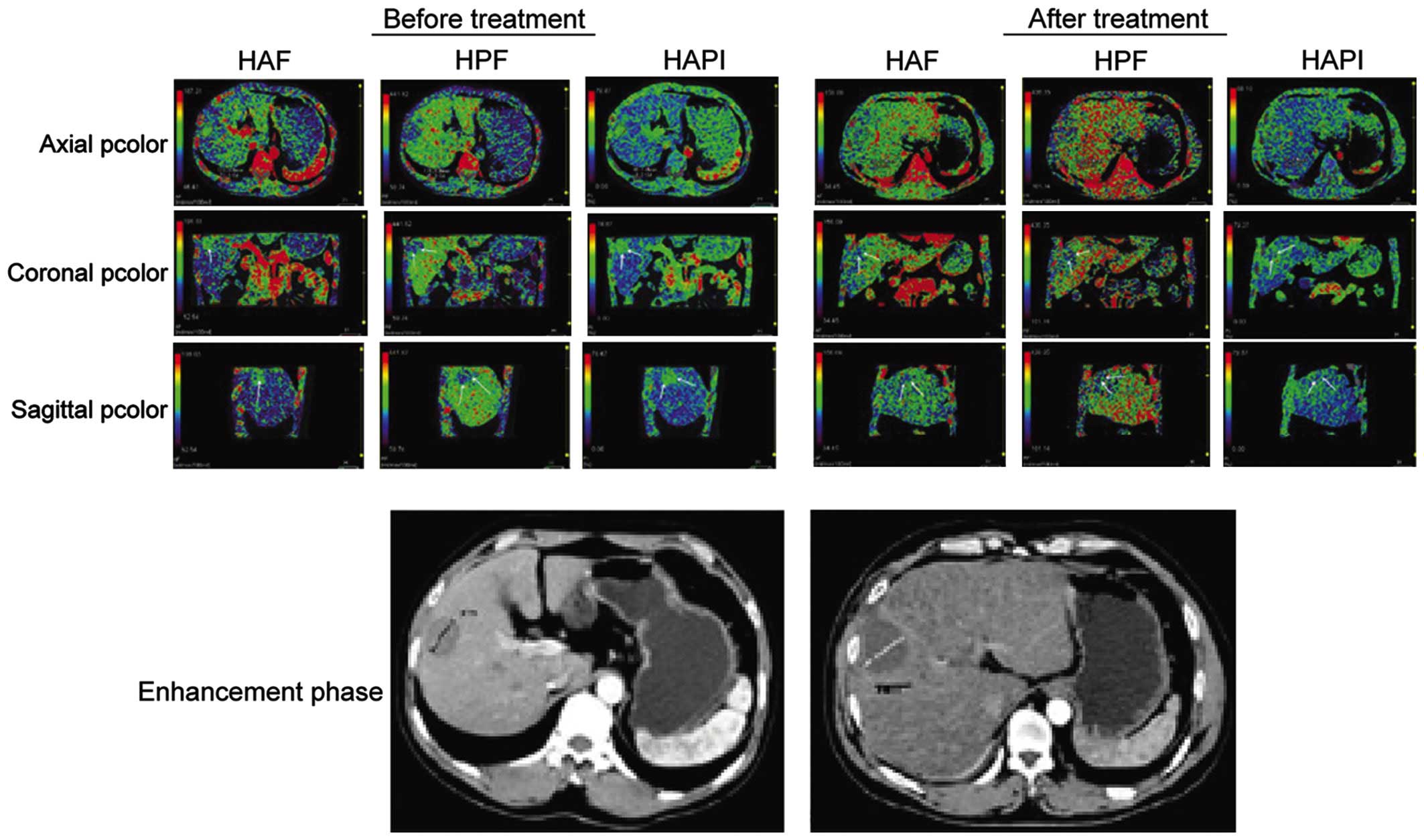|
1
|
Vitali GC, Laurent A, Terraz S, Majno P,
Buchs NC, Rubbia- Brandt L, Luciani A, Calderaro J, Morel P,
Azoulay D, et al: Minimally invasive surgery versus percutaneous
radio frequency ablation for the treatment of single small (≤3 cm)
hepatocellular carcinoma: a case-control study. Surg Endosc. 3:3–5.
2015.
|
|
2
|
Hao XJ, Li JP, Jiang HJ, Li DQ, Ling ZS,
Xue LM and Feng GL: CT assessment of liver hemodynamics in patients
with hepatocellular carcinoma after argon-helium cryoablation.
Hepatobiliary Pancreat Dis Int. 12:617–621. 2013. View Article : Google Scholar : PubMed/NCBI
|
|
3
|
Wang C, Lu Y, Chen Y, Feng Y, An L, Wang
X, Su S, Bai W, Zhou L, Yang Y, et al: Prognostic factors and
recurrence of hepatitis B-related hepatocellular carcinoma after
argon-helium cryoablation: a prospective study. Clin Exp
Metastasis. 26:839–848. 2009. View Article : Google Scholar : PubMed/NCBI
|
|
4
|
Wang CP, Lu YY, Wang XZ, An LJ, Su SH,
Zhou L, Chen Y, Jia HJ, Feng YY and Yang YP: Percutaneous
argon-helium cryoablation for primary hepatocellular carcinoma:
report of 300 cases. Med J Chin PLA. 133:1413–1417. 2008.
|
|
5
|
Ma GL, Bai RJ, Jiang HJ, Hao XJ, Dong XP,
Li DQ, Liu XD and Wei L: Early changes of hepatic hemodynamics
measured by functional CT perfusion in a rabbit model of liver
tumor. Hepatobiliary Pancreat Dis Int. 11:407–411. 2012. View Article : Google Scholar : PubMed/NCBI
|
|
6
|
Li JP, Zhao DL, Jiang HJ, Huang YH, Li DQ,
Wan Y, Liu XD and Wang JE: Assessment of tumor vascularization with
functional computed tomography perfusion imaging in patients with
cirrhotic liver disease. Hepatobiliary Pancreat Dis Int. 10:43–49.
2011. View Article : Google Scholar : PubMed/NCBI
|
|
7
|
Wei S, Hao X, Zhan D, Xiong M, Li K, Chen
X and Huang Z: Are surgical indications of Barcelona Clinic Liver
Cancer staging classification justified? J Huazhong Univ Sci
Technolog Med Sci. 31:637–641. 2011. View Article : Google Scholar : PubMed/NCBI
|
|
8
|
Yu HB, Ge CL, Huang ZH, Wang H, Liu ZY and
Zhang JR: Effect of targeted argon-helium cryoablation on the
portal region in canine livers. Nan Fang Yi Ke Da Xue Xue Bao.
29:538–540. 2009.(In Chinese). PubMed/NCBI
|
|
9
|
Wu S, Hou J, Ding Y, Wu F, Hu Y, Jiang Q,
Mao P and Yang Y: Cryoablation versus radiofrequency ablation for
hepatic malignancies: a systematic review and literature-based
analysis. Medicine (Baltimore). 94:e22522015. View Article : Google Scholar : PubMed/NCBI
|
|
10
|
Huang YZ, Zhou SC, Zhou H and Tong M:
Radiofrequency ablation versus cryosurgery ablation for
hepatocellular carcinoma: a meta-analysis. Hepatogastroenterology.
60:1131–1135. 2013.PubMed/NCBI
|
|
11
|
Jain R, Narang J, Schultz L, Scarpace L,
Saksena S, Brown S, Rock JP, Rosenblum M, Gutierrez J and Mikkelsen
T: Permeability estimates in histopathology-proved
treatment-induced necrosis using perfusion CT: can these add to
other perfusion parameters in differentiating from
recurrent/progressive tumors? AJNR Am J Neuroradiol. 32:658–663.
2011. View Article : Google Scholar : PubMed/NCBI
|
|
12
|
Sabir A, Schor-Bardach R, Wilcox CJ,
Rahmanuddin S, Atkins MB, Kruskal JB, Signoretti S, Raptopoulos VD
and Goldberg SN: Perfusion MDCT enables early detection of
therapeutic response to antiangiogenic therapy. AJR Am J
Roentgenol. 191:133–139. 2008. View Article : Google Scholar : PubMed/NCBI
|
|
13
|
Haider MA, Farhadi FA and Milot L: Hepatic
perfusion imaging: concepts and application. Magn Reson Imaging
Clin N Am. 18465–475. (x)2010. View Article : Google Scholar : PubMed/NCBI
|
|
14
|
Tsushima Y, Funabasama S, Aoki J, Sanada S
and Endo K: Quantitative perfusion map of malignant liver tumors,
created from dynamic computed tomography data. Acad Radiol.
11:215–223. 2004. View Article : Google Scholar : PubMed/NCBI
|
















